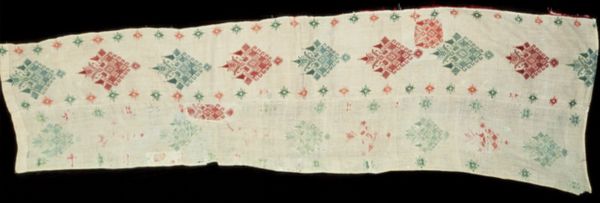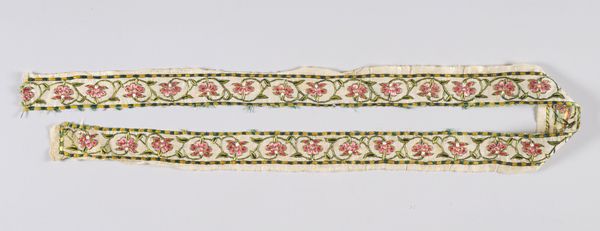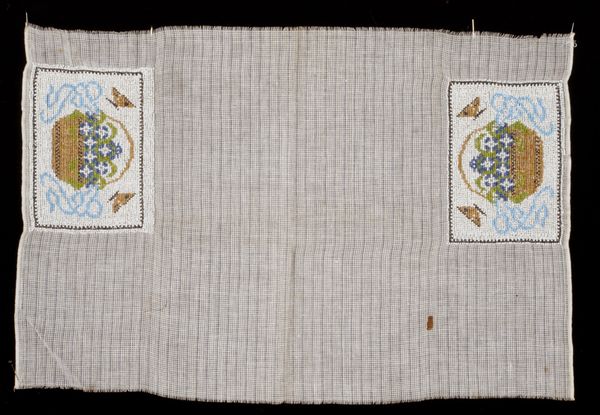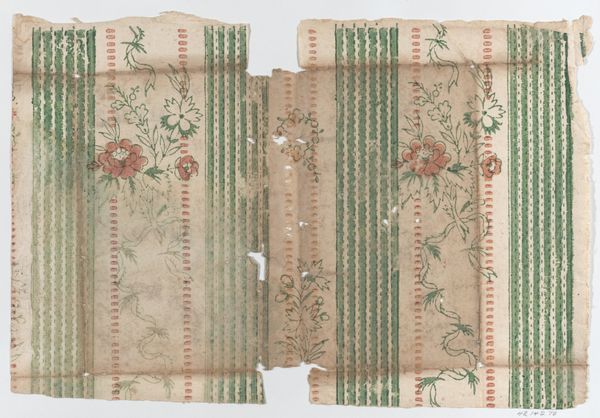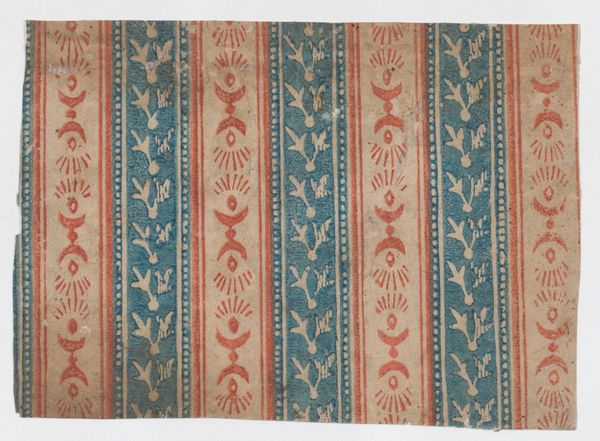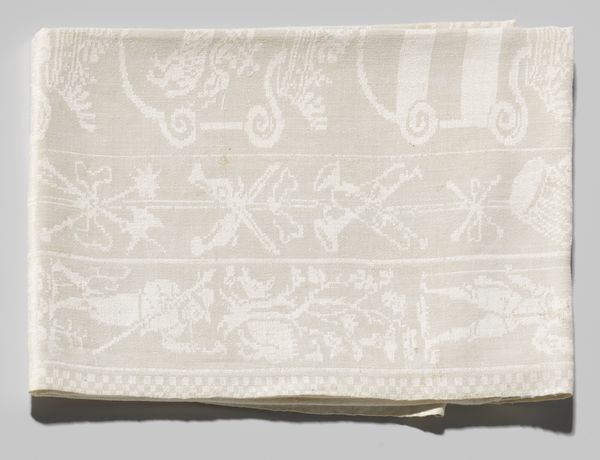
Dimensions: 18 x 7 in. (45.72 x 17.8 cm) (each, approx.)
Copyright: Public Domain
Curator: These Five Fragments from a Waistcoat, dating from the 19th century, present a glimpse into the sartorial elegance of the time. What are your initial impressions? Editor: They appear fragile, like faded memories rendered in silk. I am immediately drawn to the craftsmanship, and how the remnants speak to use, wear, and history. Curator: Precisely. The Rococo style, so prevalent in the decorative arts, manifests here in the delicate floral motifs. Notice how the composition favours asymmetrical balance, a deliberate break from stricter symmetry of earlier periods. Editor: But what processes led to this asymmetry? To its design and the labor behind each stitch, each color? Look at the slight inconsistencies in the pattern; one can sense human labor inherent in these irregularities, revealing its materiality, almost obscuring its high art connotations. Curator: I understand, but focus on the visual dynamic achieved. The curving lines, the pastel palette – predominantly blues, greens and yellows – all contribute to an overall effect of lightness, of airiness. Semiotically, one could argue, these visual elements signified privilege and refinement. Editor: Yet this signifies an important turning point in labor history too. Who made the silk? Were these materials luxury for some or standard wares for most? How was textile production being revolutionized? I am curious how the shift to industrialization may impact the artistry of clothing. Curator: Undoubtedly significant from a social perspective. But consider the purely formal elements: the vertical orientation of each fragment emphasizes height, which, when worn, would have subtly altered the wearer's perceived proportions. Editor: I concede the intentionality behind aesthetic effects; however, for me, these are compelling objects because they stand as partial documents of clothing manufacture as a process rooted in collective effort and textile manipulation, even if anonymously rendered here at the Minneapolis Institute of Art. Curator: I leave considering both its sartorial significance, as well as this tangible remnant of ephemeral trends, offering aesthetic intrigue nonetheless. Editor: For me, the garment represents the confluence of production, making, social stratification, as well as labor systems in this intricate web.
Comments
No comments
Be the first to comment and join the conversation on the ultimate creative platform.

